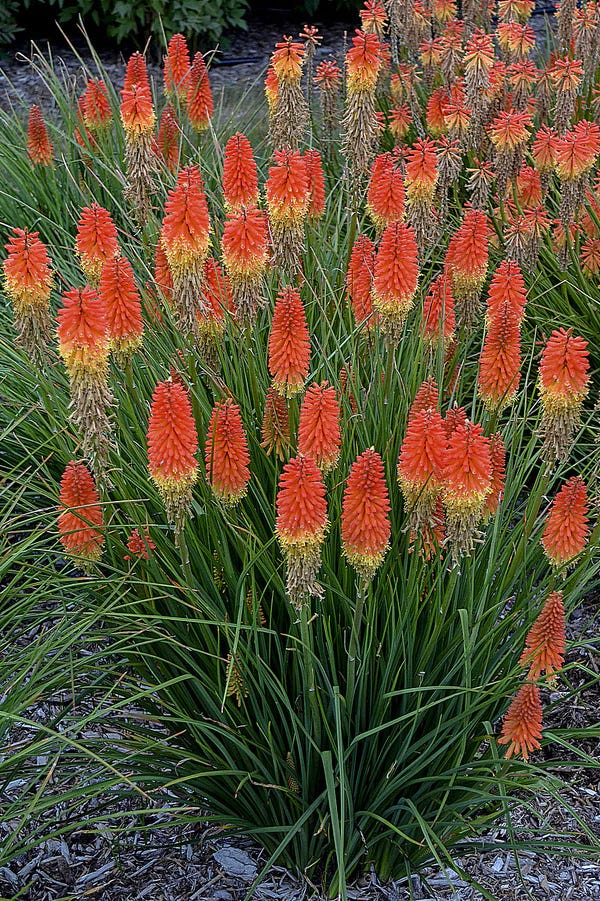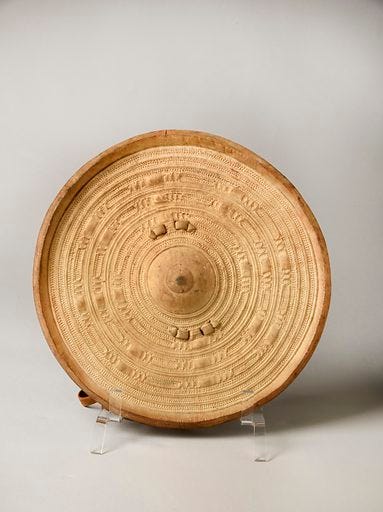ALSO KNOWN AS: Aloe Perryi, Turkey aloe, Bombay aloe, Perry’s Aloe
Not Aloe Vera with its robust green and softer lances, though closely related.
Or the kniphofia which looks very similar: with lance leaves and red flares for flowers, these are not succulents. But they are from the same family.
How to Know:
red to coral shaded flowers at the end of a leafless stalk known as a scapes
“liver colored” leaves filled with a liquidy substance
basal rosette: star shaped
Flung off the sharp horn of the Somali Peninsula, hundreds of miles out in the ocean, is an archipelago that is technically part of Yemen with the island of Socorta (Soqotra) as its largest land mass. This desert island, 200 miles from the country that claims it, is rife with biodiversity, putting to shame any thought that a desert connotes scarcity. Most other aloes are from central and south African countries, and while this aloe is technically in Yemen, it’s geographically in Africa.
Socotra itself is a wonder. It is one of the most biodiverse islands in the world, with up 90% of its reptile, 37% of its plant, and 95% of its land snail species unique the land.
Socotrine aloe is part of this robust ecosystem. It was created by and for it, growing among the rocks, on flat land or the soft slopes of hills in limestone or granite soil.
Socotrine aloe can tolerate poor soil and oppressive droughts, though it needs consistent drainage.
The have broad rosettes with 12 to 30 leaves reaching out in a starlike pattern. Their pale green lances turn reddish as they mature, and take on an even deeper shade when they are in a need of water, a time that may not come for many seasons. But they do not suffer from any old drought. These are plants that are built to summon and hold water for the long haul. To survive they have a wide, deep, and fibrous root system that brings water up and holds it in. Rather than their lush aloe counterparts, the dense lances have a tough skin that will not easily be burned.
Socotrine aloe survives winter through a dormant phase when it barely needs any water at all. Many plants (as plant owners know) need less water in the winter for this reason. But this particular aloe is striking in its ability to survive without water. The ancient Egyptians referred to it as “the plant of immortality” perhaps for this very reason.
An account by the medical writer Ḥājī Zayn al-‘Aṭṭār of Ikhtiyārāt-i Badī‘ī, a Persian pharmaceutical manuscript from the fourteenth century. This aloe was so sought after, al-‘Aṭṭār states, that Alexander the Great sent Greeks to this island to rid the land of its native inhabitants and to cultivate and export the Socotrine aloe. He goes on to describe the incredible magic the people of these islands have: about magicians who lived there with such powerful command of their art they could make an organ disappear from a person’s body. And if they could do this, what other kind of magic could they make? On an island of such diversity and life, one would think it’s full of spirits. These accounts are not well founded, but they spark the imagination.
According to the Ikhtiyārāt-i Badī‘ī, “The best type of Socotran aloes are the color of liver… [the sap] has the color of saffron and emits the smell of goose fat.”
There so many words in biology to describe the formations in a plant that if we were in fact to do a whole substack on what’s that part of the plant?! we could. And I understand that it’s important to have common language about the flower of the dandelion being the same flower as the lily, when in reality they are two completely different forms with different functionings. The way a bobcat’s paw is different from the talon of an eagle.
The Socotrine aloe has a specific flowering manifestation that is similar to goldenrod where the flowers grow out of the stem. When there are many flowers bunched together on one plant this is called an inflorescence when the flowers grow up the stem as in the goldenrod and the Socotrine aloe, this inflorescence is called a raceme.
The raceme of the Socotrine aloe is bright red, like the tail of a fire bird, burning in the desert.
The aloe is honored by its miraculous interior. Aloe comes from the Arabic word, “Alloeh” meaning, shining, bitter substance. Aloes are part of the Asphodelaceae family, which is closely related to the lily family. All of these plants share a scape (with a raceme), or long leafless stalk with flowers at the end. They are monocots, meaning they have a singular seed, rather than a double. Their veins are usually long as with grasses and reeds.
As with all aloe types, Socotrine aloe is not different in its healing capacities. Beneath the tough outer skin is a reservoir of clear tissue, a gel that is used for everything from medicine to fancy overpriced aloe drinks.
The sap of Aloe contains anthraquinones which are used as laxatives. So small doses are used for purging and remedies. The sap of this plant is like a liquid shield, plump with medicinal properties. It stays on the skin, treating wounds, burns, and irritations like a flexible shield. Aloectin B within the plant stimulates the immune system, so, not only do these plants have external effects, their chemistry allows for internal healing as well. There have been early scientific studies showing that Socotrine aloe can be used as an anti-ulcer agent, and it has also been used to remedy ulcers and illnesses in dogs and cats, reminding us that plant remedies are and must regularly be used by animals as well as human patients.
Myth for Socotrine aloe
The first people came from the desert and they were dancers, singers, gymnasts, musicians, and magicians. They could tell stories with air. They could paint the land with song. These people knew how to create out of nothing but the raw elements all around them. The people grew so talented that those in the sky became jealous and they pulled the water up around them. Many people died in that time as they ran from the approaching water. Those in the sky were going to wipe the first people out all together, but they found they could not pull the water further. The Socotrine aloe was known to be the strong one and created a web beneath the ground and held that bit of land up, and when the sun came out to burn the people the socotrine aloe created a skin around them so they would not burn. So the people of the sky stopped pulling. And slowly the first people lived so well on that island they became all the creatures that are still there.
Forager Friendly!
Yes, these plants are safe for foraging, but, as with all foraging, there must be precautions taken before eating or using this plant, and an identification system that confirms one's knowledge of the plant. On top of this, care must be taken for where these plants are harvested from.
Sources
https://recipes.hypotheses.org/17570
https://www.nlm.nih.gov/hmd/arabic/pharmaceutics6.html#p9
http://www.llifle.com/Encyclopedia/SUCCULENTS/Family/Aloaceae/23896/Aloe_perryi
https://tropical.theferns.info/viewtropical.php?id=Aloe+perryi
https://whc.unesco.org/en/list/1263/









Interesting! I’ve never seen the flowering aloe and now I know why.